Historical
background
SACEM (Society of Authors, Composers and Publishers of Music) was founded in 1851 by Ernest Bourget, author, Paul Henrion and Victor Parizot, composers, and Jules Colombier, publisher.
patrons of the arts
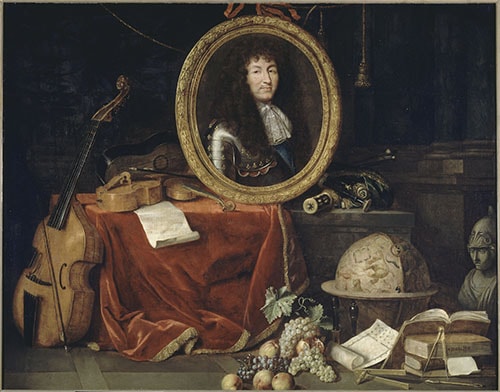
Under the Ancien Régime, most artists were able to survive thanks to pensions from benefactors. With the French Revolution, the idea of creating a true status for creators emerged: Art was considered, at last, to be a fully-fledged profession rather than a pastime without wages.
The Statute of Anne
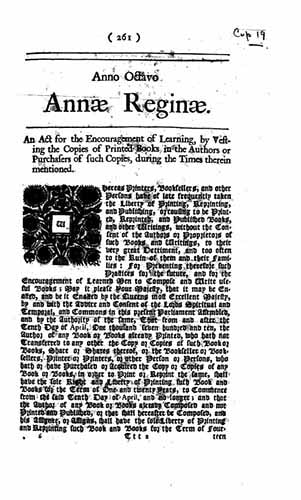
This was the first law to establish the notion of authors’ rights. Voted by the British House of Commons, it recognized to the authors of published works “the exclusive right to reprint them for a term of twenty-one years.”
Beaumarchais, the father of authors’ rights
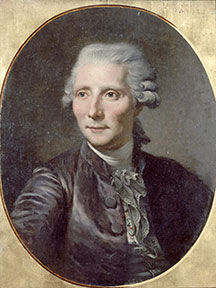
Beaumarchais was at the origin of the Society of Dramatic Authors and Composers (SACD) in 1777, dedicated almost exclusively to theatrical works.
At the time, music was considered a minor art and music publishers viewed as nothing more than shopkeepers.
Lack of legal protection for authors
On 4 August 1789, the abolition of privileges put an end to the rights protecting authors and booksellers. It was not until the Revolutionary initiatives of 1791 that the rights of musical authors were put on the “political agenda.”
Legislation on authors’ rights
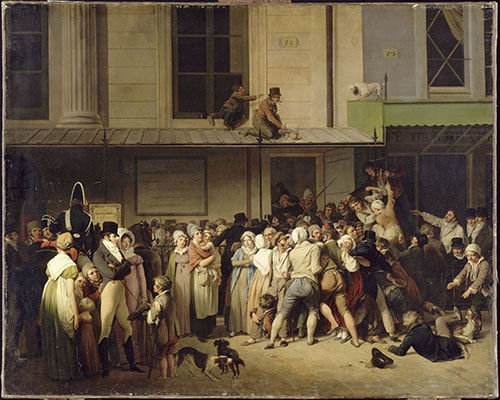
For the first time, a decree by the National Assembly recognized the performing right and defined authors’ rights:
- in their moral dimension: authorship of a work and respect for its integrity,
- in their economic dimension: a monopoly for the economic exploitation of a work for a variable period of time.
At the time, this concerned dramatic authors only.
Public performing rights
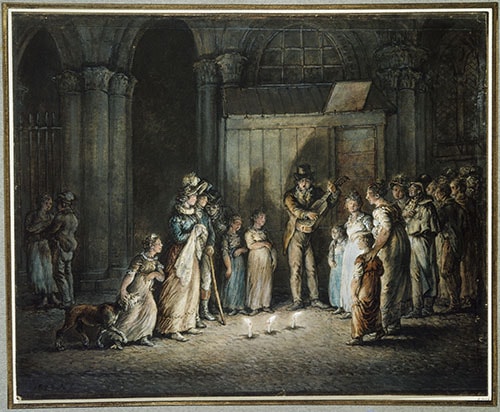
A new decree recognized performing rights and, more specifically, public performing rights including concerts, thereby giving rise to what today we consider the rights of authors and composers.
Establishment of reproduction and publication rights for works
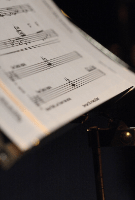
For the first time, a decree gave a comprehensive definition of authors’ rights, which cannot be transferred to a publisher, but belong to authors throughout their lives, then to their heirs (or other rights holders as specified) for five years. This duration was extended to fifty years in 1866, then seventy years in 1997.
Subsequent legislation remained in line with the Age of Enlightenment, asserting individual freedom.
Ernest Bourget, the man who created SACEM
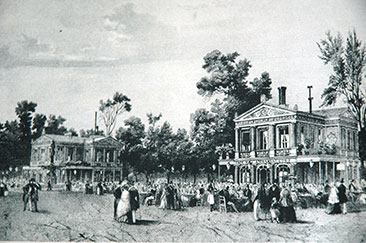
At Les Ambassadeurs Café-Brasserie on the Champs-Elysées, the composer Ernest Bourget refused to pay his bill! His justification was that he owed nothing since the café owner used his works for his own profit without paying royalties to remunerate the authors. The ensuing trial led to a ban, on 8 September 1847, on playing Ernest Bourget’s works in this Café-Concert. Bourget also received damages.
Case law favourable to the rights of authors and composers of music
The decision of the Court of Justice of Paris of 28 April 1849 was favourable to the remuneration of authors. It also guaranteed the legitimacy of the principle of authors’ rights, i.e. the exclusive rights of the author of a work in view of its dissemination and reproduction.
Ernest Bourget and his friends filed many suits against those using their repertoires without paying royalties, winning them all.
The first society bringing together authors, composers and publishers of music

In December 1849, Victor Parizot introduced Paul Henrion to Ernest Bourget. Paul Henrion wished to found L’Intermède, a periodical dedicated to popular songs, to remunerate lyricists and composers. When Ernest Bourget informed him of his own intention to found a structure grouping creators, Paul Henrion seized the opportunity. They met with Jules Colombier, the publisher who had paid the guarantee to the Commercial Court in the first trial.
They laid the groundwork for a mutual society, Le Syndicat des Auteurs, Compositeurs & Éditeurs de Musique, located at 63 Rue Sainte-Anne in Paris.
The cofounders include many creators (Daniel François Esprit Auber, Eugène Scribe, Jacques Fromental Halévy, Joseph Darcier, Charles Plantade, Adolphe Adam, Hippolyte Guérin, François Masini, Frédéric de Courcy, Charles Delange, Jules Moinaux...) and publishers (Jules Colombier, Léopold Heugel, Ernest Meissonnier, François Bonoldi...). From May to December 1850, royalties collected in Paris alone increased tenfold.
Founding SACEM, Society of Authors, Composers and Publishers of Music
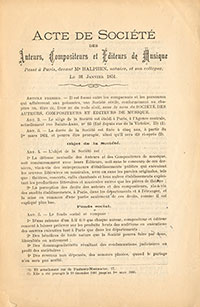
Armand Halphen, a notary in Paris, confirmed the foundation of SACEM, Society of Authors, Composers and Publishers of Music.
The Statutes specified the purpose of the Society to be “mutual protection” of its members “with respect to producers of entertainment and public establishments performing musical works.”
350 members join SACEM
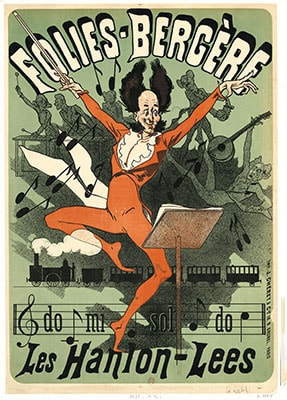
SACEM had 350 members (authors, composers, publishers of music), 760 in 1858.
This period was marked by the start of the urban revolution, the growth of metropolises and the progression and multiplication of Café-Concerts and unofficial venues (Café des Muses, Quai Voltaire, Café Apollon, Boulevard du Temple...).
The beginning of a strong territorial presence
As SACEM grew, it located in the Provinces (15 new agencies). The Society moved its headquarters to larger premises at 17 Faubourg Montmartre in the 9th Arrondissement of Paris.
Rue Chaptal, home to SACEM until 1976
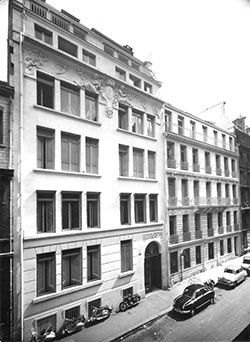
SACEM headquarters moved to 10 Rue Chaptal, still in the 9th Arrondissement of Paris, where it remained for 75 years.
Foundation of CISAC

A non-profit, non-governmental organisation, CISAC (International Confederation of Societies of Authors and Composers) is the main global network of authors’ societies.
Foundation of BIEM
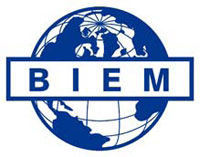
BIEM (Bureau International des Sociétés gérant les Droits d’Enregistrement & de Reproduction Mécanique) is an international organisation grouping societies representing mechanical reproduction rights.
Creation of SDRM

SDRM (Society for the Management of Mechanical Reproduction Rights of Authors, Composers and Publishers of Music) is in charge of managing rights for sound and visual reproduction. Its principle is simple: collective management at the lowest possible cost.
A century after SACEM’s foundation... the number of members is multiplied by 170.
SACEM had 60,000 members (authors, composers, publishers of music) and 1.5 million works in the global repertoire.
Law on artistic and literary property
The law of 11 March 1957 recognized authors’ economic (“patrimonial”) rights and their moral rights, created by the courts.
Moral rights are distinct from economic rights, i.e. they are immaterial. Moral rights include recognition of the authorship of a work and respect for its integrity.
Creation of SACEM Cultural Action

SACEM developed cultural action to aid musical creation, the dissemination of works and integration of young professionals.
Headquarters on the River Seine

SACEM moved from Rue Chaptal to Avenue Charles-de-Gaulle (in Neuilly-sur-Seine) and modernized. It reinforced its social and professional policy, reorganized its network in the Provinces, developed new internal structures and intensified cooperation with foreign societies, in particular in major international negotiations with new players in the music industry.
The Lang law on neighbouring rights and private copying

The private copy levy was instituted by Law 85-660 of 3 July 1985 on authors’ rights and neighbouring rights, known as the Lang Law, for private copying of audio and audiovisual works. Private copying is an exception to authors’ rights which entails financial compensation. The principle is simple: when storage media (blank DVD or CD, USB flash drive, external hard drive, tablet, smartphone, etc) are purchased, part of the price paid by consumers goes to remunerating creators, authors, publishers, performing artists, publishers and producers: this is the private copy levy.
It also helps support cultural events all over France: 25% of the total amount helps fund Creation.
Thanks to private copying, SACEM can support almost 2,000 cultural events each year.
Law on quotas for French-language songs on radio

Since 1 January 1996 private radio stations are required to broadcast at key listening hours, 40% of songs “of French expression,” at least half must be the work of new talents or new productions.
SACEM signs its first digital contract (with FranceMP3.com)
This provided for an agreement on the dissemination and downloading of music in MP3 format with the collective management societies SACEM, SDRM and SESAM.
Law on Creation and the Internet (HADOPI)

The law of 12 June 2009 aimed to put a stop to “peer-to-peer” file sharing when it infringes authors’ rights.
On 15 September 2009, it was extended by a new law on criminal protection of artistic and literary property on the Internet. This “HADOPI 2” law aimed to restore the repressive aspect of the first law, deemed to be partly in non-compliance.
Signature of the first SACEM contract with YouTube

This was the first agreement between a collective management society in France and the platform for exchanging videos online. The contract covers access to the global music repertoire in France.
Creation of the online service for registering works

Every year, over a million works are registered with SACEM.